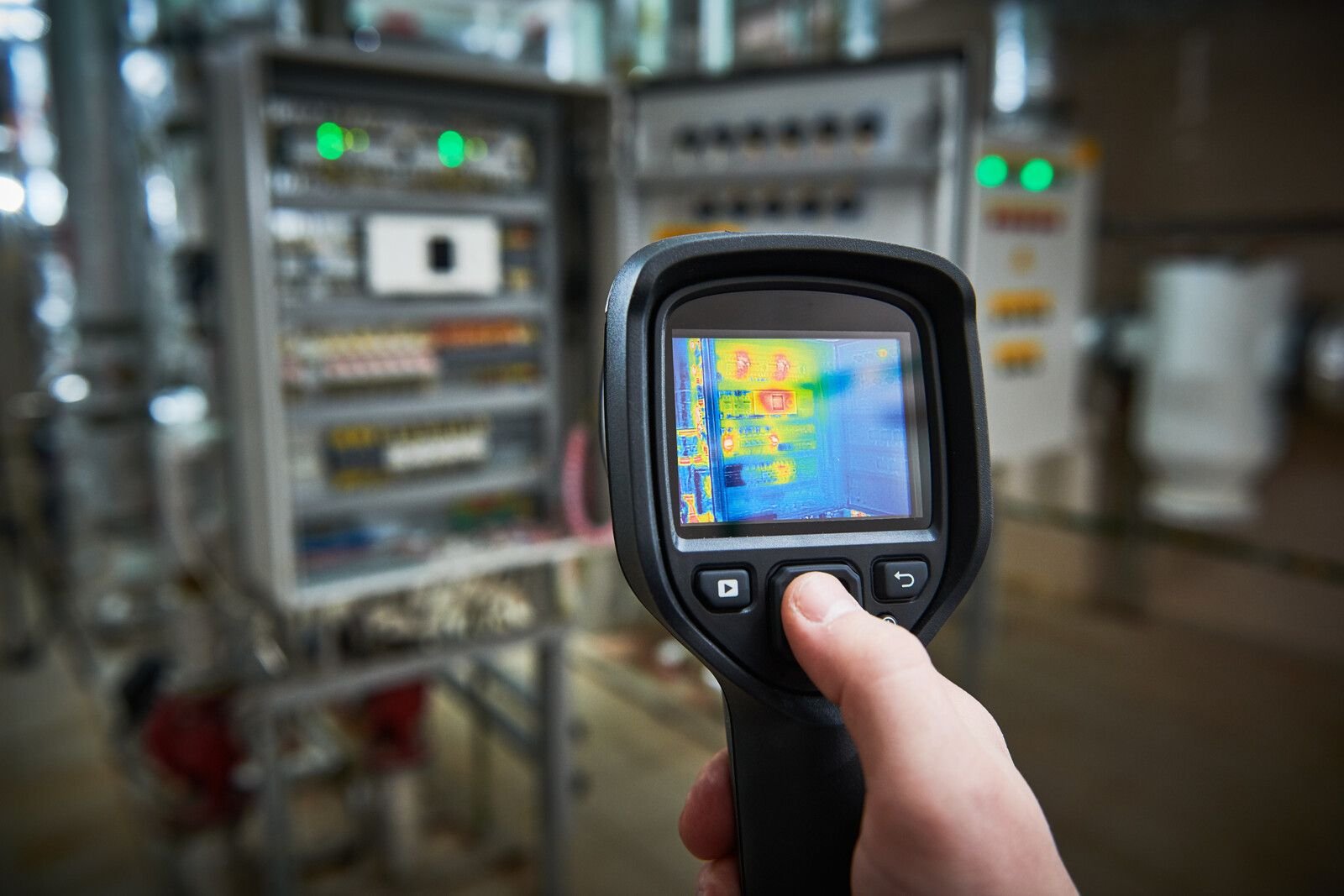What is Thermal Imaging
/Thermal Imaging Explained
Thermal imaging is a technology that uses a special camera to detect infrared radiation emitted by objects and convert it into a visible image that can be seen by the human eye.
All objects with a temperature above absolute zero emit infrared radiation, which is invisible to the naked eye. Thermal imaging cameras can detect this radiation and create an image that shows the variations in temperature across an object or scene. The resulting image, called a thermogram, shows different colors or shades of grey to represent different temperatures. Hotter areas are shown as white or bright colors, while cooler areas are shown as black or darker colors.
Thermal imaging is used in a variety of applications, including building inspections, industrial equipment maintenance, medical diagnosis, and even military surveillance. It can be a powerful tool for identifying potential problems, monitoring performance, and improving safety in a wide range of settings.
Thermal Imaging Inspections
As a provider of electrical testing and compliance services we utilise thermal imaging technology to find hot spots caused by defects in connections and components. Infrared thermography can be used to find areas of excess heat, caused by increased resistance, so that problems can be corrected before a component fails. Failure can cause damage to the component, creating a safety hazard and possible loss of productivity. Increased heat can highlight the sign of failure which makes infrared thermography an excellent diagnostic tool in finding these faulty connections in the early stages of degeneration.
Examples of how thermal imaging can help us and our clients:
Detecting hot spots: Thermal imaging cameras can detect areas of high temperature in distribution boards that may indicate an overload, short-circuit, loose connection or other issues. By identifying hot spots early, our electrical engineers can take action to prevent electrical fires, equipment damage, or other hazards.
Preventive maintenance: Regular thermal imaging inspections of distribution boards can help identify potential issues before they become serious problems. By detecting and addressing problems early, preventive maintenance can help extend the lifespan of equipment and reduce downtime.
Cost-effective: Thermal imaging is a cost-effective way to inspect distribution boards, especially in large facilities where traditional inspection methods may be time-consuming or expensive.
Non-contact: Thermal imaging allows engineers to inspect distribution boards without having to come into contact with live electrical components, reducing the risk of injury or electrical shock.
Detectable Conditions
Thermal imaging can help ensure the safe and efficient operation of distribution boards and other electrical equipment. Your insurance company may even ask for an electrical infrared inspection to find and prevent problems before they cause damage to your personnel, equipment and premises. Detectable conditions using thermal imaging can include:
Faulty/deteriorated connections
Circuit overloads
Open circuits
Unbalanced circuit loads
Inductive heating
Defective equipment
How often should a Thermal Imaging test be conducted?
Thermal Imaging can highlight defects in components early on; if remedial action is taken quickly this can prevent failure, downtime and costly repairs. The age and use of your building and electrical installation may determine the time period chosen for testing, although an annual test will ensure that faults are detected early.
Contact Us
If you would like to know more about electrical testing, please feel free to contact us. We have a team of qualified engineers who can conduct these tests for you and provide the required reports.
Don’t leave your employees safety to chance, speak to us now.
Free to Download
You may also be interested in downloading our eBook - A Guide to Electrical Compliance and Testing which covers the best practice and regulations regarding electrical testing in the workplace.












